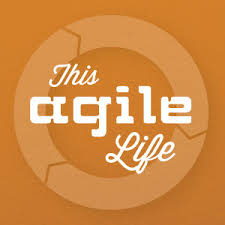layout: true <header> <p class="left">RubyConf</p> <p class="right">2016-11-10</p> </header> <footer> <p class="left">@CraigBuchek</p> </footer> --- class: title, middle, center # A Look at Hooks ### Craig Buchek ??? * Feel free to ask questions during! --- class: affiliations # About Me *  [BoochTek][boochtek] *  [This Agile Life][tal] *  St. Louis *  [Binary Noggin][binary_noggin] *  [Tech Institute](http://www.handsupunited.org/techimpact/) *  Ivan ??? * I have a company called BoochTek * We do: * Web Development * Rails rescue projects * Agile player/coaching * DevOps * I do a lot of work through Binary Noggin * We have developers available starting in January * I participate in a podcast called This Agile Life * Please subscribe * I mentor teaching underprivileged kids * I was told there must be at least 1 cat picture * So there's a picture of my cat --- class: what_is_a_hook # What Is a Hook? * A method: * Called implicitly by Ruby * We never call ourselves ??? * Definition I'm using in this talk: * A method that's called implicitly by Ruby * And that we never call ourselves * Because it's implicit: * Can be surprising * Can be difficult to troubleshoot * "Spooky action at a distance" * A term from physics * In Ruby docs, you'll see them referenced as: * "Hook" * "Callback" * But that has more meanings * "Ruby calls" * I'm covering only hooks in Ruby itself --- # BasicObject#initialize ~~~ ruby class X def initialize puts "Initializing an instance of X" end end x = X.new ~~~ ~~~ output Initializing an instance of X ~~~ ??? * Who here has used `initialize`? * Pretty much everyone, probably * Notice that we never explicitly called `initialize` * But it got called anyway * This is by far the most commonly used hook in Ruby --- # Class#new: Behind the Scenes ~~~ ruby x = X.new ~~~ ~~~ ruby class Class def new(*args, &block) object = allocate # Allocate space in memory to hold the object object.initialize(*args, &block) if object.respond_to?(:initialize) return object end end ~~~ * `X` is an object of class `Class` * So calling `X.new` calls `Class#new` ??? * So what's really happening when we call `X.new`? * `X` is an object of class `Class` * So calling `X.new` calls `Class#new` * Seems weird, but how every method call works * Find the class of what's before the dot * Call the instance method from that class * Because the call to `initialize` is hidden, it's a hook * NOTE: This code is actually implemented in C * It also calls `initialize` via `__send__` * So it will work if `initialize` is private * NOTE: Understanding that classes are instances of the `Class` class is tricky * If you need to, take some time to work through thinking about it --- # Meta-Programming Basics * `method_missing` * `respond_to_missing?` ??? * Meta-programming is where you're most likely to use hooks --- # BasicObject#method_missing ~~~ ruby class X def method_missing(method_name, *args, &block) puts "Method called on an X: #{method_name}, args: #{args}" end end X.new.some_method(1, "a", :b) X.new.another_method ~~~ ~~~ output Method called on an X: some_method, args: [1, "a", :b] Method called on an X: another_method, args: [] ~~~ ??? * How many of you have used `method_missing`? * Probably a large percentage * We're allowing the calling of a method that we never defined * Pretty commonly used for meta-programming * ActiveRecord uses `method_missing` in several places * Biggest downside --- you can't search your code for the method * The method name is passed as a `Symbol` * We use `*args` to get all the arguments as an `Array` * All arguments except a block (if one is passed in) * The `*` is called "splat" * NOTE: The block isn't being used in this example * I just wanted to show the full method signature --- # Object#respond_to_missing? ~~~ ruby class X def method_missing(method_name, *args, &block) puts "Method called on an X: #{method_name}, args: #{args}" \ if respond_to_missing?(method) end def respond_to_missing?(method_name, include_private=false) method_name =~ /^good_/ end end X.new.respond_to?(:good_method) X.new.respond_to?(:bad_method) ~~~ ~~~ output true false ~~~ ??? * Called when `respond_to?` is called, and the method is not defined * Before Ruby 1.9.2, we used to just override `respond_to?` * Called when calling `method` * Example at http://stackoverflow.com/a/13793573 * Note that it takes a 2nd argument * Whether to include private methods * Always define `respond_to_missing?` when overriding `method_missing` * See a nice explanation at http://blog.marc-andre.ca/2010/11/15/methodmissing-politely/ * Yes, this is on `Object`, while `method_missing` is on `BasicObject` * Because `BasicObject` doesn't have `respond_to?` --- # Module#const_missing * Avoid this one * Seems enticing, but leads to long-term problems * Use `require` instead * Or maybe `autoload` ??? * Rails uses this to auto-load classes * Remember, class names are constants * In general, it's not worth it * Just manually require the file containing the class/constant you need * If you really want something like this, try registering with `autoload` instead * `autoload(:MyModule, "/usr/local/lib/modules/my_module.rb")` --- # Inheritance Life-Cycle * `included` * `extended` * `prepended` * `inherited` --- # Module#included ~~~ ruby module A def self.included(other_module) puts "#{self} included in #{other_module}" end end class B include A end ~~~ ~~~ output A included in B ~~~ ??? * Note that it's `def self.included` * Because it's a method on the module itself * Note that we don't need to new up a B * The `include` (and the `included` hook) runs as soon as we call it * TODO: Maybe in a next slide show how that works with normal code * Called when this module is included in another module or class * Called with the class or module that is including us * NOTE: There's a similar hook called `append_features` * It adds constants, methods, and module variables of this module to module passed in * I know of no reason to use `append_features` over `included` * Unless you want to do something nefarious and NOT add constants/methods/variables --- # Module#extended ~~~ ruby module A def self.extended(other_module) puts "#{self} extended by #{other_module}" end end module B extend A end ~~~ ~~~ output A extended by B ~~~ ??? * Just like `included` * Note that it's `def self.extended` --- # Module#prepended ~~~ ruby module A def self.prepended(other_module) puts "#{self} prepended in #{other_module}" end end class B prepend A end ~~~ ~~~ output A prepended in B ~~~ ??? * Ruby added `prepend` in 2.0 * Basically the same as `include` but adds the module to the beginning of the inheritance chain * Used when `alias_method_chain` used to be used * See https://hashrocket.com/blog/posts/module-prepend-a-super-story for a good example * Just like `included` * Note that it's `def self.prepended` * Because it's a method on the module itself --- # Class#inherited ~~~ ruby class A def self.inherited(other_class) puts "#{self} subclassed by #{other_class}" end end class B < A end ~~~ ~~~ output A subclassed in B ~~~ ??? * Note that it's `def self.inherited` * Because it's a method on the class itself --- # Method Life-Cycle * `Module#method_added` * `Module#method_removed` * `Module#method_undefined` ??? * These are on `Module` * Because regular instance methods are defined in modules and classes * You will probably find few good reasons to call `remove_method` or `undef_method` * See https://ruby-doc.org/core-2.3.0/Module.html#method-i-undef_method for docs * You can also call `undef method_name` instead of `undef_method :method_name` * Removing a method will allow any superclass methods to still be called * Only example I can think of is if you dynamically added it * Undefining a method will set the method to return a `NoMethodError` * Only example I can think of is if you're trying to look like an older Ruby --- # Singleton Method Life-Cycle * `BasicObject#singleton_method_added` * `BasicObject#singleton_method_removed` * `BasicObject#singleton_method_undefined` ??? * But you can also add methods to individual objects * These are called singleton methods * This is how you define a class method --- it's a singleton method on the class itself * These are the equivalent for singleton methods --- class: strict_conversion # Implicit (Strict) Conversion Methods * `to_str` * `to_int` * `to_ary` * `to_hash` * `to_proc` * `to_enum` ??? * These are used to say something "is like" what it's converting to * Not just "can be shown as" * https://zverok.github.io/blog/2016-01-18-implicit-vs-expicit.html * Most of these are used when trying to compare using `==` * If types are not the same, will try to convert the right side to the same type as the left * `to_str` - used when concatenating strings * A UserName class might be a good place to define this * Because you want to be able to use it anywhere you use a String * `to_ary` - assigning to multiple left-hand variables (or block arguments) * http://stackoverflow.com/questions/9467395/whats-the-difference-between-to-a-and-to-ary * `to_int` - used when performing bit operations (`|`, `&`, `^`) * `to_hash` - used to convert `method_name(**kwargs)` * `to_proc` - called when trying to convert to a block using the `&` operator * `to_enum` returns an Enumerator, not an Enumerable --- class: strict_conversion_2 # Implicit Versus Explicit Conversion * `to_str` * `to_int` * `to_ary` * `to_hash` * `to_proc` * `to_enum` * `to_s` * `to_i` * `to_a` * `to_h` * `&` ??? * Here are the explicit equivalents * You almost always want to define the explicit versions * Think carefully before defining the implicit variants * Important note: `to_s` is used in interpolation * So `to_s` could be considered *implicit* in that case * Even though it seems implicit to me * Important note: `*x` calls `to_a(x)` (implicitly) * Once again, called an "explicit" conversion * I think this changed to `to_ary` in Ruby 2.0 --- # Numeric#coerce * Find a common type for math with mixed types ~~~ ruby class Quaternion def +(other) case other when Quaternion Quaternion.new(self.i + other.i) else Quaternion.new(self.i + other) end end end q1 = Quaternion.new(1) puts 2 + q1 ~~~ ~~~ output coerce.rb:18:in `+': Quaternion can't be coerced into Fixnum (TypeError) ~~~ ??? * `coerce` helps find a common type when doing math on mixed types * `Numeric`, its subclasses, and similar things like `Matrix` and `Vector` * Binary operators * Looks at `self` (the left-hand operand) and the other operand * Allows you to "cast" the operands into something compatible * See http://stackoverflow.com/a/2799899 --- # Numeric#coerce * Add `coerce` to fix the problem: ~~~ ruby class Quaternion def coerce(other) puts "Quaternion#coerce called" [Quaternion.new(other), self] end def to_s "Quaternion(#{i})" end end q1 = Quaternion.new(1) puts 2 + q1 ~~~ ~~~ output Quaternion#coerce called Quaternion(3) ~~~ ??? * Note that `coerce` returns an `Array`, with `self` as the 2nd element --- # Numeric#coerce * Coercion transforms binary operators like this: ~~~ ruby q1 = Quaternion.new(1) n = 2 [q2, q1] = q1.coerce(n) q1 + q2 ~~~ ??? * This only happens after trying without coercion --- # Kernel#at_exit * Sets a block or proc to run on program exit * If `$!` is set, program is exiting due to an exception ~~~ ruby at_exit do if $! puts "We crashed! #{$!.inspect}" else puts "fin" end end ~~~ ??? * `at_exit` sets a proc to be run on program exit * If called multiple times, they're run in reverse order of registration * Can check if `$!` is set to see if programming has crashed due to an exception * NOTE: `$!` contains the last exception that was raised * We can convert it to a string or inspect it * If we `require "english"`, it's equivalent to $ERROR_INFO --- class: thanks # Thanks  ??? * Thank YOU for coming * Thanks to STL Ruby members for feedback on my first version --- # Feedback * Please talk to me in the hallway! * Twitter: [@CraigBuchek][twitter] * GitHub: [booch][github] * Email: craig@boochtek.com * Slides: https://github.com/booch/presentations/ ??? * Please talk to me in the hallway! * I'm introverted * I live people * I like talking to interesting people about interesting things * I like talking about interesting things * Credits: * Clip art from Clipart.co [twitter]: https://twitter.com/CraigBuchek [github]: https://github.com/booch [github-boochtek]: https://github.com/boochtek [boochtek]: http://boochtek.com [binary_noggin]: http://binarynoggin.com/ [tal]: http://www.thisagilelife.com [remark]: http://remarkjs.com/